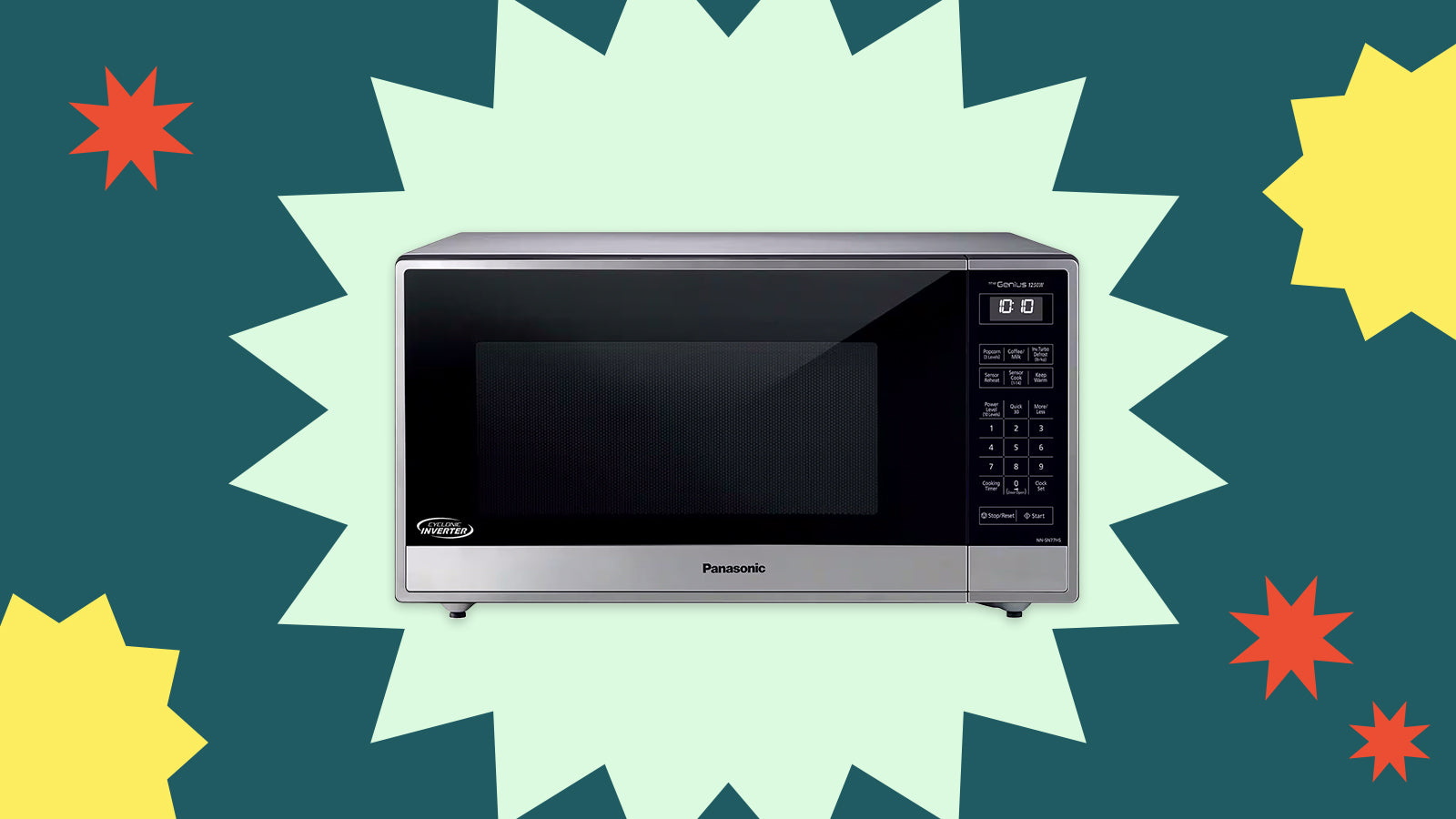Think your microwave is just a magic re-heating machine? Think again. The microwave is actually a super-powered steamer capable of cooking food from scratch in a fraction of the time than traditional methods. The microwave seems like a mysterious appliance, but the more you know about it, the more powerful you can be in the kitchen. Speaking of power, there’s a particular type of microwave that’s even more powerful than typical models: and that’s an inverter microwave.
Inverter technology is shaking things up in the microwave space, offering a smarter, more efficient, and more consistent microwave cooking experience. That’s because inverter microwaves provide consistent power for even cooking.
In this post, we’ll break down what makes an inverter microwave different from an average microwave, how to tell if you have one, and why it’s a game changer. Plus, we’ll show you why Anyday is the ultimate partner for inverter microwaves—giving you precise, powerful results every time.
What is an inverter microwave?
Have you ever noticed (or used) the “Cook Power” button on your microwave? If not, it’s time to start! Cooking at lower power levels can unlock a gentler cooking experience. Think of it this way, you don’t sauté everything on the stovetop on high, or broil everything that you cook in the oven, right? The concept is the same when cooking in the microwave. Most microwaves offer different power levels to use to cook different types of food more effectively.
Let’s start with the basics: When cooking at lower power levels, traditional microwaves work by cycling power on and off. This happens because most microwaves lack the ability to reduce their actual power output—instead, they pulse between full power and no power to mimic lower settings. For example, when you select 50% power, the microwave alternates between blasting full power and not running at all. This cycling can potentially lead to uneven results when reheating food, leaving you with hot and cold spots.

Now, enter the inverter microwave. Think of inverter technology like a dimmer switch, where you can smoothly adjust the light to exactly the brightness you need (AKA you actually lower your microwave power to a lower setting.) This steady and controlled heat allows for more precise and even cooking, just like how a dimmer provides consistent lighting at a lower brightness. An inverter microwave maintains the selected power level from start to finish, ensuring food is cooked gently and evenly. This efficiency also means food typically cooks faster in an inverter microwave than in a traditional microwave with the same wattage.
Why does my microwave wattage matter?
You might ask, why does any of this matter? Anyday recipes are developed for wattages ranging from 700 to 1200 watts, which are common in most households. Our goal is to help people with any kind of microwave achieve the best results. With all the microwave make and models out there, we have our work cut out for us! But we’re committed to making your life easier in the kitchen. When following our recipes, you’ll start by selecting your microwave’s wattage in the dropdown menu, and the recipe automatically adjusts cook times and power levels for you. Easy, right?

However, if you have an inverter microwave, keep this in mind: A 1000w inverter microwave is more powerful than a standard 1000w microwave and is more likely to function like a traditional 1100-watt microwave. Here’s the golden rule of inverter microwaves: “add +100 to traditional microwave wattage.” If you have a 1000w inverter microwave, be sure to select the ‘1100w’ option in our recipe dropdown menu for the most accurate results. This adjustment will ensure that you’re cooking your food at the right power for the right amount of time.
How do I know if my microwave Is inverter?
Not sure if your microwave uses inverter technology? Check the label or user manual for the term "inverter," or search your model number online. If it's not explicitly mentioned, it's likely a traditional model. If your microwave has inverter technology, the brand will make that very clear in the product description and label.
Why you’ll want an inverter microwave in your kitchen
If you’re considering an upgrade, an inverter microwave is a smart investment for your kitchen. Inverter technology makes cooking easier, more precise, and faster. Instead of cycling power on and off, they deliver a steady flow of microwaves (that heat up the water molecules in your food!), ensuring even cooking whether you're reheating leftovers, defrosting meats, or cooking delicate proteins like fish and seafood.
Pair an inverter microwave with Anyday, and you’ve got the ultimate combination. The precision of an inverter microwave ensure consistent results from edge to center, making it ideal for more delicate recipes.
- Custard or egg-based dishes like chawanmushi, flan, cheesecake, and pumpkin pie come out perfectly smooth.
- White rice steams evenly, as the grains hydrate on low power (like they would on the stovetop).
- Recipes with longer cook times like dry beans and pulled pork benefit from consistent, steady heat.
- Fish and seafood—especially frozen—stay tender and perfectly cooked.
And here’s an added bonus: inverter microwaves are more energy-efficient. They use less power, cook faster, and save you time while lowering your energy bills. Plus, with their eco-friendlier design, you can feel good about making a choice that benefits both your kitchen and the planet.
Upgrading to an inverter microwave doesn’t just mean faster and more even cooking—it means unlocking the full potential of your Anyday dishes. With precise power control and energy efficiency, an inverter microwave is the perfect partner for making every meal easier, tastier, and more eco-friendly.





Share:
The 13 Best Costco Items To Cook in Your Microwave
12 Easy Microwave Soup Recipes for Chilly Weather